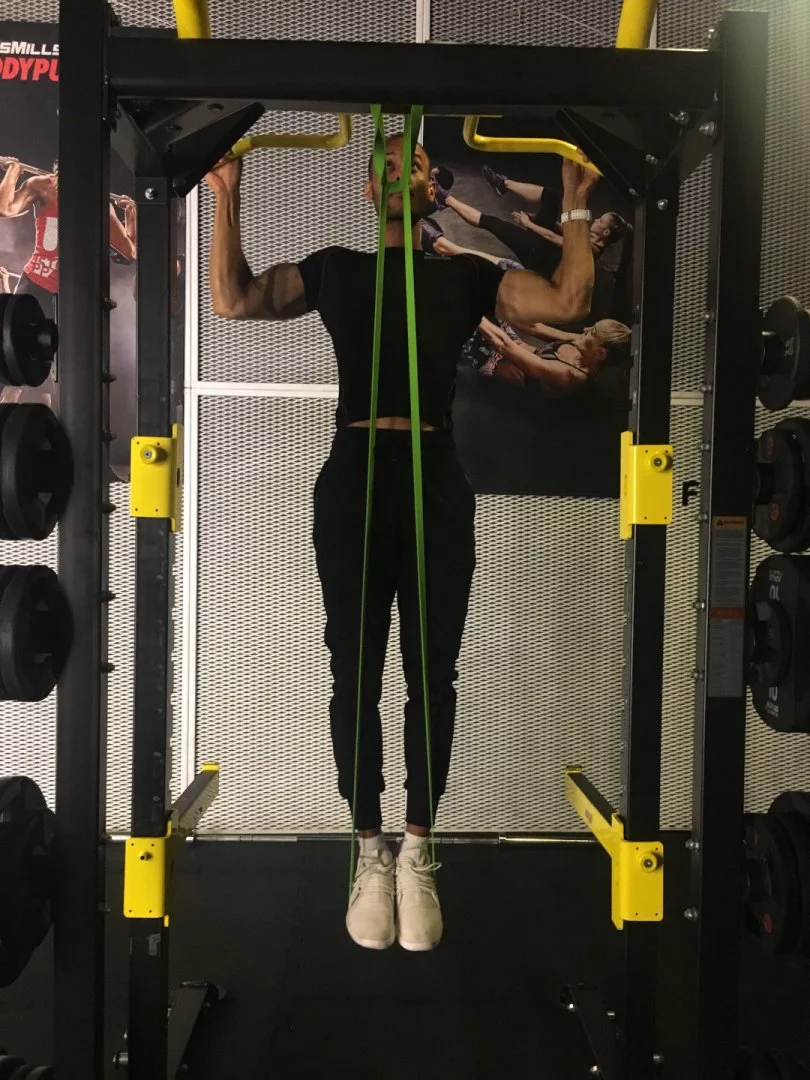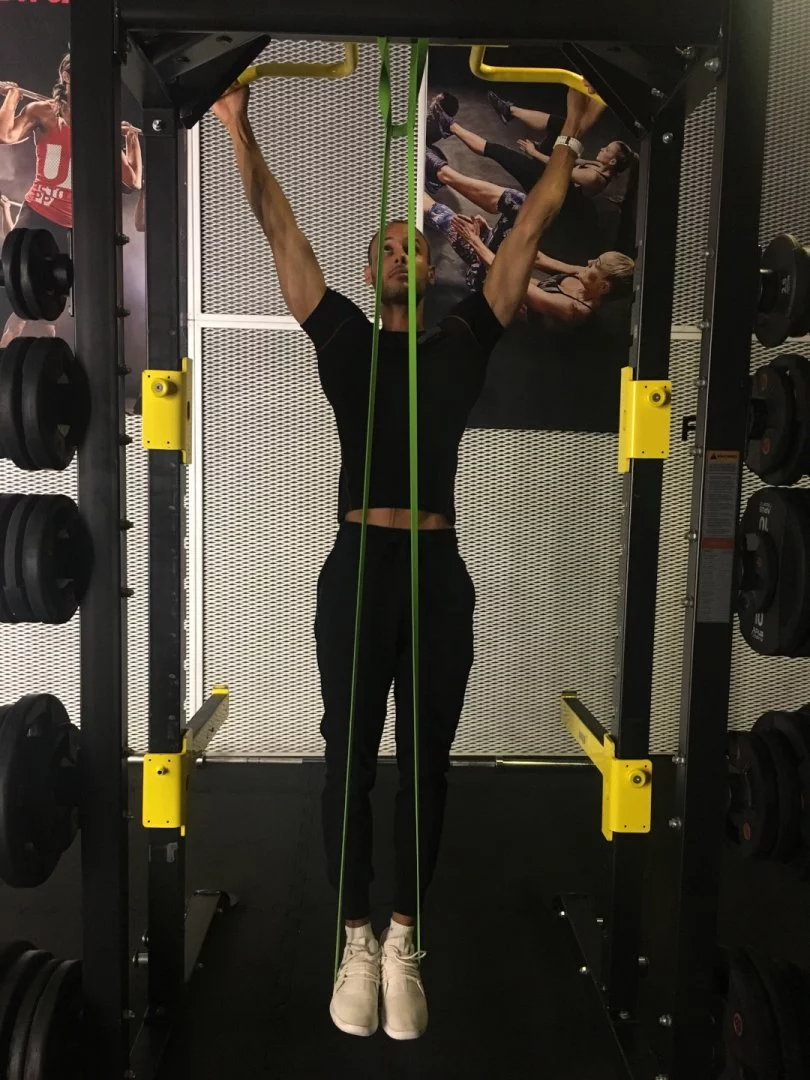Resistance bands are undoubtedly taking the fitness world by storm. You can find them in gyms, fitness studios, and yoga classes. They come in two main types:
Classic Power Bands are longer and thicker and are typically used for heavier, more intense exercises. Mini Power Bands are shorter—usually up to half a meter in length—and are most often used for glute and thigh workouts. Each band is color-coded according to its resistance level. Resistance band training is a fantastic way to break through plateaus and add variety to your routine.
If you’re bored with traditional workouts and looking to freshen up your training plan, you absolutely need to try these moves!
Squats need no introduction—they’re a staple in nearly every training plan, whether you're aiming to bulk up or slim down.
They come in countless variations: back squats, front squats, sumo squats, goblet squats, Bulgarian split squats—and of course, with resistance bands!
Simply place the Mini Power Band just above your knees and make sure it's under tension throughout the movement. Keep your feet stable and knees aligned (don’t let them cave inward). The added resistance activates your glute and hip abductor muscles for even better results.
Hip thrusts are hands down one of the best exercises to shape your glutes. As an old (made-up) Chinese saying goes: “If you want Brazilian glutes – do hip thrusts!” 😄
This exercise is so effective that it’s inspired dozens of variations: on a bench, BOSU, step platform, with one leg raised, or using resistance bands. With the band placed just above the knees, make sure your legs don’t collapse inward. The added resistance will increase glute activation for even greater gains!
This classic ab move is usually done with a high pulley machine in a standing or kneeling position. It targets the rectus abdominis without stressing the lower back or neck. When done with a resistance band, the tension increases progressively with range of motion, making your abs work even harder.
Pull-ups are a top-tier exercise for developing the latissimus dorsi. Unfortunately, many people can’t perform even one rep due to excess body weight.
This is where resistance bands come in handy. Their elastic resistance helps lift your body upwards. In most exercises, the band’s tension increases as you stretch it—but here, the opposite effect works in your favor: the thicker the band, the easier the pull-up.
To get started, simply loop the band around the pull-up bar and place your feet inside the lower loop.



Traditionally performed with dumbbells, lateral raises challenge your shoulder muscles. With weights, the load remains constant throughout the movement. With bands, the resistance increases as you lift your arms higher—adding intensity and providing a fresh challenge to stagnant routines. If you haven’t tried this variation yet, you definitely should!
One of the most iconic bicep moves gets a serious upgrade with a resistance band. You can do it with just the band, or add a barbell or dumbbells for more challenge. For an even stronger pump, pause and squeeze your biceps at peak contraction for about two seconds. It may sound subtle—but trust me, your arms will feel the burn!
These are just a few examples of the countless exercises you can do with resistance bands. They can be easily added to your standard strength workouts with barbells and other equipment. The only limit is your imagination—so keep experimenting to ensure your training always stays fun and effective! 💪
Still hungry for more resistance band inspiration? Check out Kuba Orłowski’s Top 3 Power Band Exercises!